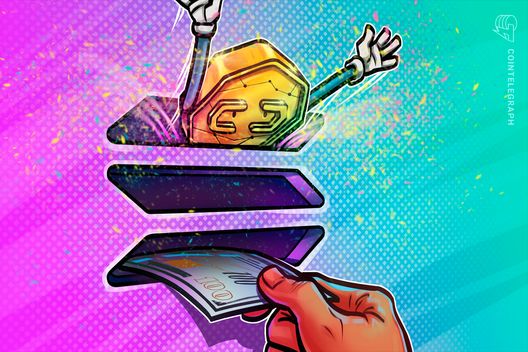In a marked response to evolving economic conditions, Bitcoin (BTC) maintained a steady course during Friday’s Asian trading hours, hovering above 4,000. This stability followed a significant policy shift by the Bank of Japan (BOJ), which elevated its benchmark borrowing cost to the highest level in 17 years. The BOJ’s decision was accompanied by increased inflation forecasts, suggesting a more aggressive approach to monetary policy aimed at nurturing wage growth.
The central bank’s policy statement highlighted a positive outlook, indicating a continuous trajectory of interest rate hikes while adjusting the extent of monetary accommodation. As a consequence, the Japanese yen strengthened, rising over 0.6% against the U.S. dollar. Despite these global shifts, Bitcoin and other risk assets appeared resilient, with the futures connected to the S&P 500 also showing little movement.
“If the outlook presented in the January Outlook Report will be realized, the Bank will accordingly continue to raise the policy interest rate and adjust the degree of monetary accommodation,” the policy statement noted.
The recent actions and statements from the BOJ contrast sharply with the current political landscape in the U.S., where market participants are turning their attention towards prospective policy changes under Donald Trump’s administration. Just a day prior, Trump signed an executive order aimed at prohibiting a digital dollar while simultaneously promoting innovation in cryptocurrencies and Artificial Intelligence. This dual approach could have far-reaching implications for the future of digital assets in the U.S.
Moreover, recent U.S. economic data showed a slowing increase in the “all tenant rent” index, which is a precursor to shelter inflation changes in the Consumer Price Index (CPI). This deceleration has sparked optimism among investors, buoying hopes that the Federal Reserve may reconsider its previously hawkish stance on interest rates projected for December.

Bitcoin Steady Amid Economic Changes
Key points from the recent developments affecting Bitcoin and the broader financial landscape:
- Bank of Japan (BOJ) Rate Increase:
- BOJ raised the benchmark borrowing cost to the highest in 17 years.
- Increased inflation forecasts signal ongoing monetary policy adjustments.
- Impact on Japanese Yen:
- The yen appreciated over 0.6% against the U.S. dollar post-rate decision.
- Bitcoin’s Resilience:
- Bitcoin traded little changed above 4,000 during these economic shifts.
- Risk assets remained firm despite the rate hike announcements.
- Focus on U.S. Policy Developments:
- Market attention is shifting to potential policy directions under Donald Trump’s presidency.
- Trump’s recent executive order promotes crypto and AI innovation while banning a digital dollar.
- U.S. Economic Indicators:
- A slower rise in tenant rent index suggests easing shelter inflation risks.
- Potential implications for Federal Reserve’s hawkish December rate predictions.
The relationship between these economic factors can significantly impact individual investment decisions and the overall financial landscape, particularly in cryptocurrency markets.
Bitcoin Stability Amid BoJ Rate Hike: A Comparative Analysis
In the ever-evolving landscape of cryptocurrencies, Bitcoin’s recent performance showcases its resilience, particularly in light of significant economic shifts such as the Bank of Japan’s (BOJ) latest rate hike. While the BOJ has tightened monetary policy by lifting borrowing costs to a 17-year high, Bitcoin has demonstrated a steadiness, remaining above the 4,000 mark. This stability contrasts sharply with previous market reactions to such policy changes, hinting at a maturing investor sentiment towards cryptocurrencies.
When examining the broader context, the BOJ’s decision has led to a strengthening of the Japanese yen, which appreciated over 0.6% against the U.S. dollar. This might typically instigate volatility in risk assets, including cryptocurrencies. However, Bitcoin’s ability to maintain its value suggests a competitive edge in its positioning as a digital asset amidst fluctuating traditional currencies. Unlike earlier instances where central bank actions prompted significant dips in crypto values—such as the BOJ’s July rate hike—this time, Bitcoin appears more insulated from such shocks.
The implications of these developments are twofold. On one hand, they present advantages for Bitcoin enthusiasts and investors, who may view this resilience as a signal of maturity in the crypto market. The growing perception that Bitcoin can weather traditional economic influences might draw in a broader range of institutional investors seeking to hedge against traditional market fluctuations. Additionally, Trump’s recent executive order banning the digital dollar while promoting crypto innovation adds a layer of excitement and possibility for growth in the U.S. crypto landscape, potentially driving more interest and investment into Bitcoin.
Conversely, this environment could create challenges for traditional markets and investors clinging to conventional assets. Should Bitcoin continue to perform steadfastly amid increasing interest rates and shifting economic policies, it may divert funds away from stocks and bonds, particularly within sectors sensitive to interest rate changes. As a result, equity markets could face obstacles as capital flows shift towards the allure of cryptocurrencies.
Ultimately, while Bitcoin’s current trajectory appears positive, the ongoing interplay between fiat policies and digital assets underscores a dynamic landscape. Investors must stay vigilant as these developments unfold, weighing the prospects of Bitcoin’s growth against the potential fallout for traditional financial markets.

















